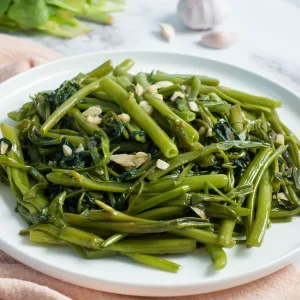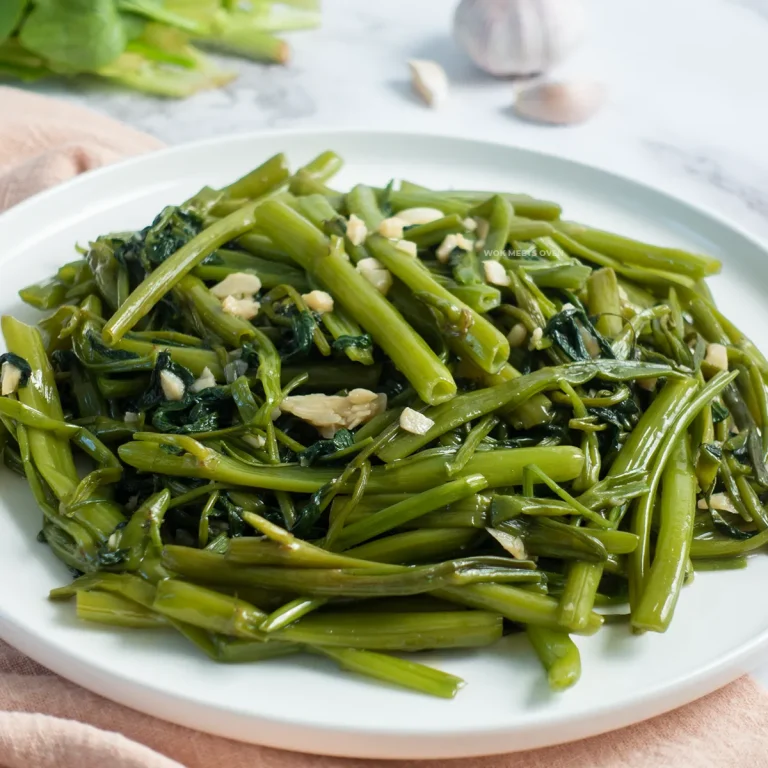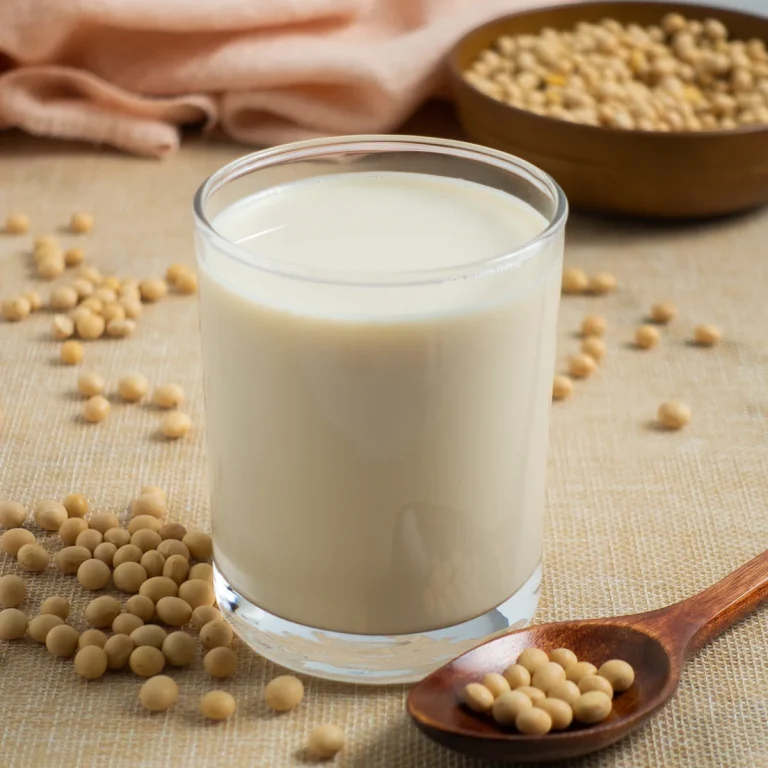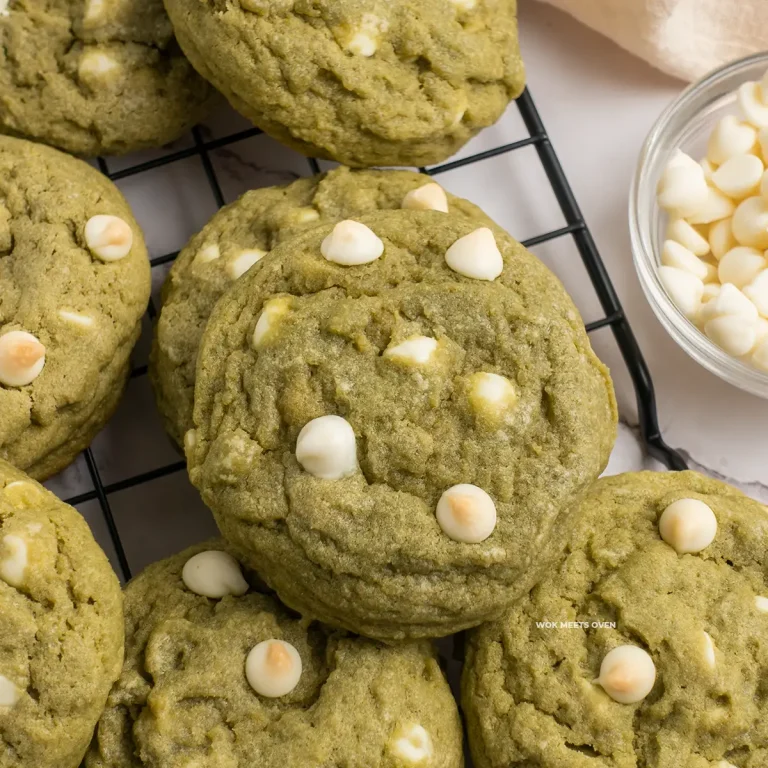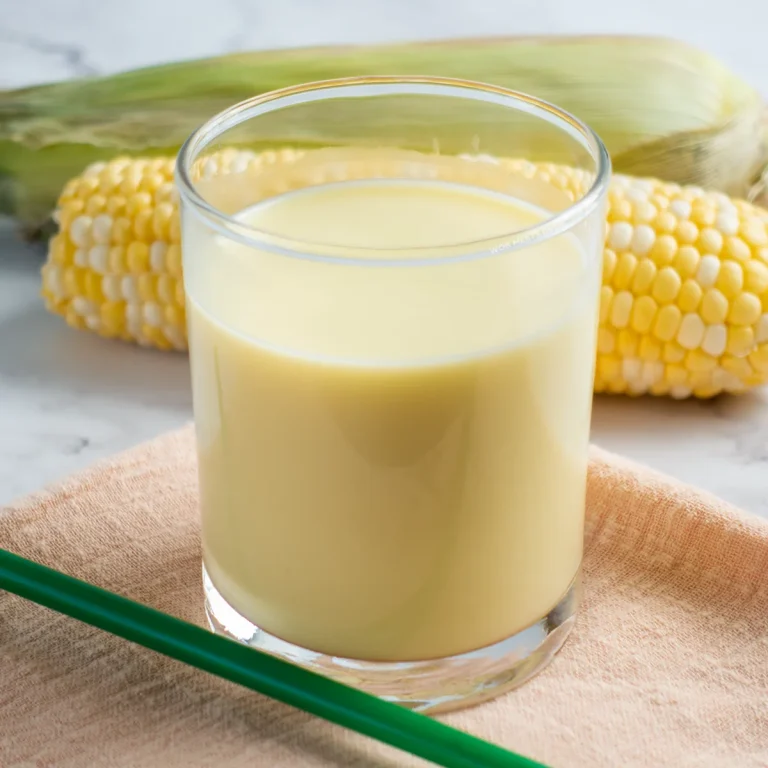Creamy Vietnamese Corn Pudding (Chè Bắp)
Vietnamese corn pudding (chè bắp) is a rich and creamy traditional Vietnamese dessert that is known for its fresh shaved corn kernels, thick glutinous rice texture, fragrant Pandan aroma, and silky smooth coconut milk topping. This easy dessert is perfect for days when you’re craving something sweet!
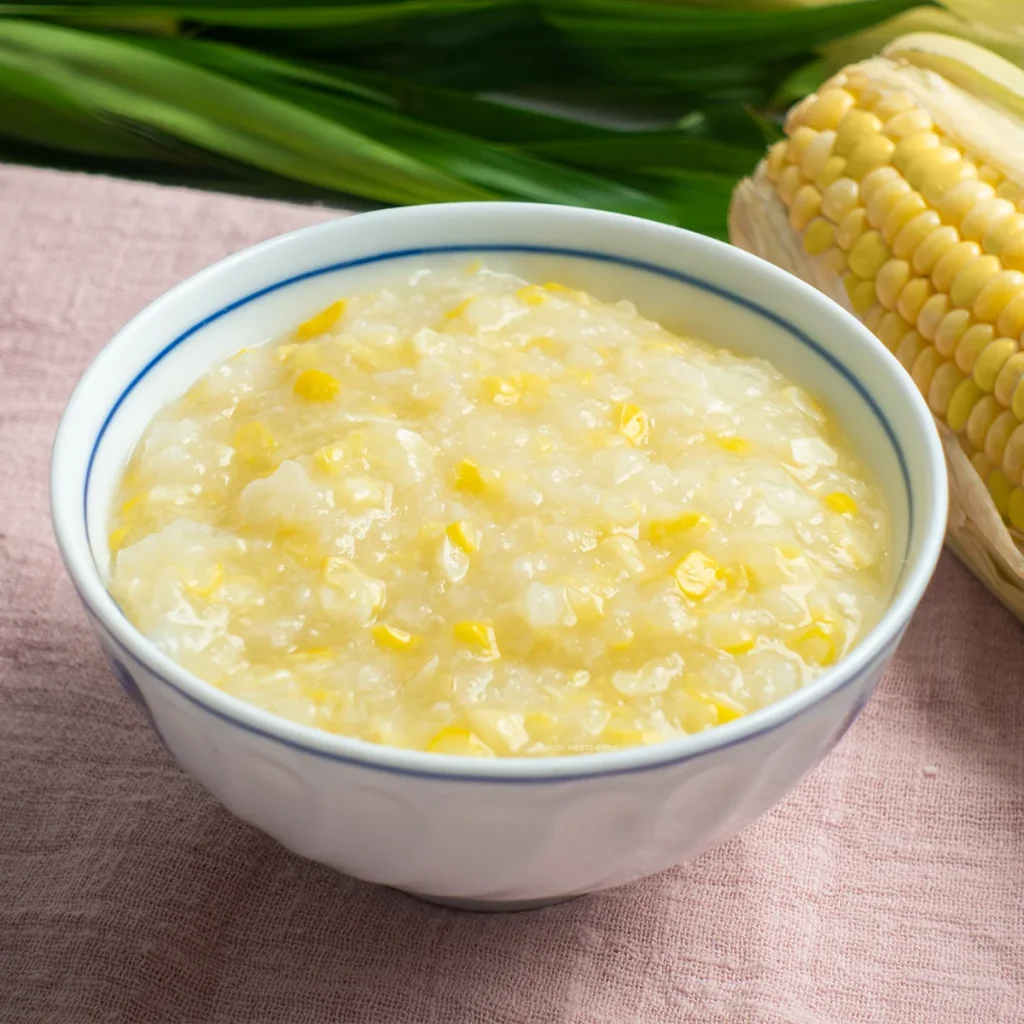
What Is Vietnamese Corn Pudding (Chè Bắp)?
Vietnamese corn pudding also known as chè bắp or chè bắp nước cốt dừa in Vietnamese is a very popular Vietnamese dessert dish that you’ll often find being eaten in a Vietnamese household. This dish is known for its distinct creamy and thick corn and glutinous rice texture, along with the fragrant smell of Pandan and the rich and velvety smooth coconut milk topping that is drizzled on top of the dessert.
Vietnamese sweet corn pudding typically uses yellow sweet corn to give the dish its beautiful distinct yellow color, however white waxy corn may also be substituted for it when yellow sweet corn isn’t available.
There is also another version of Vietnamese corn pudding (chè bắp nếp lá dứa) that adds in a tonne of Pandan juice as well to the dessert giving it a very greenish color but we’re sticking with the traditional style today.
Freshly shaved corn kernels are first cooked together in a pot of water with the cobs and Pandan leaves and then combined with cooked glutinous rice to create a thick porridge-like texture that is then topped with a creamy coconut milk sauce to produce this classic Vietnamese dish.
This Vietnamese corn pudding recipe is easy to make but tastes heavenly! You’re going to be surprised by how easy this recipe is, just watch 😉
Vietnamese Sweet Corn Pudding Ingredients
Corn pudding:
- 3 ears of fresh sweet yellow corn
- 165g of glutinous rice (gạo nếp)
- 150g of white granulated sugar
- 2 Tablespoon of tapioca starch (for tapioca slurry)
- 2 Tablespoon of water (for tapioca slurry)
- 5 Pandan leaves
- 1/4 teaspoon of table salt
- 1.3L of water for boiling corn cobs and Pandan leaves
- 450ml of water for cooking glutinous rice
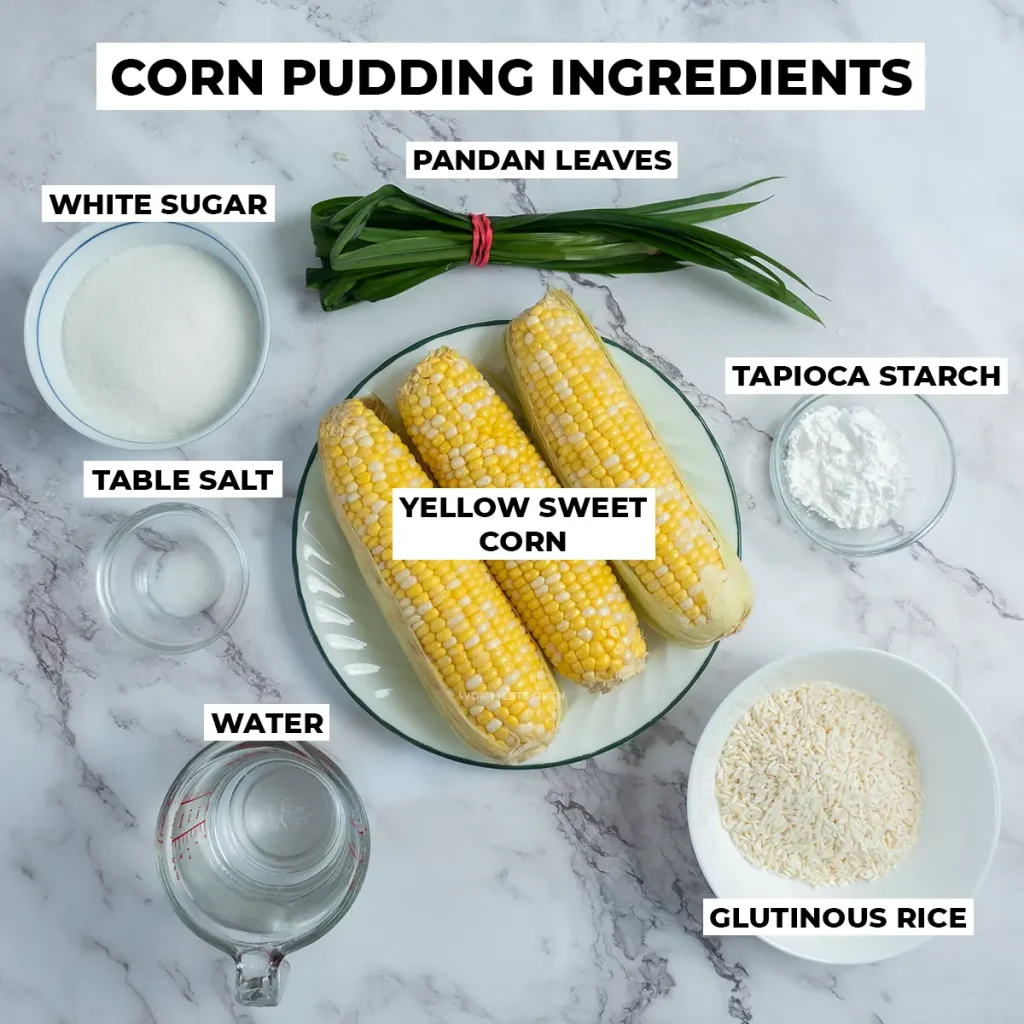
Coconut sauce:
- 400ml of coconut milk (1 Can)
- 35g of white granulated sugar
- ¼ teaspoon of table salt
- 1 Tablespoon of tapioca starch (for tapioca slurry)
- 1 Tablespoon of water (for tapioca slurry)
- 3-4 Pandan leaves
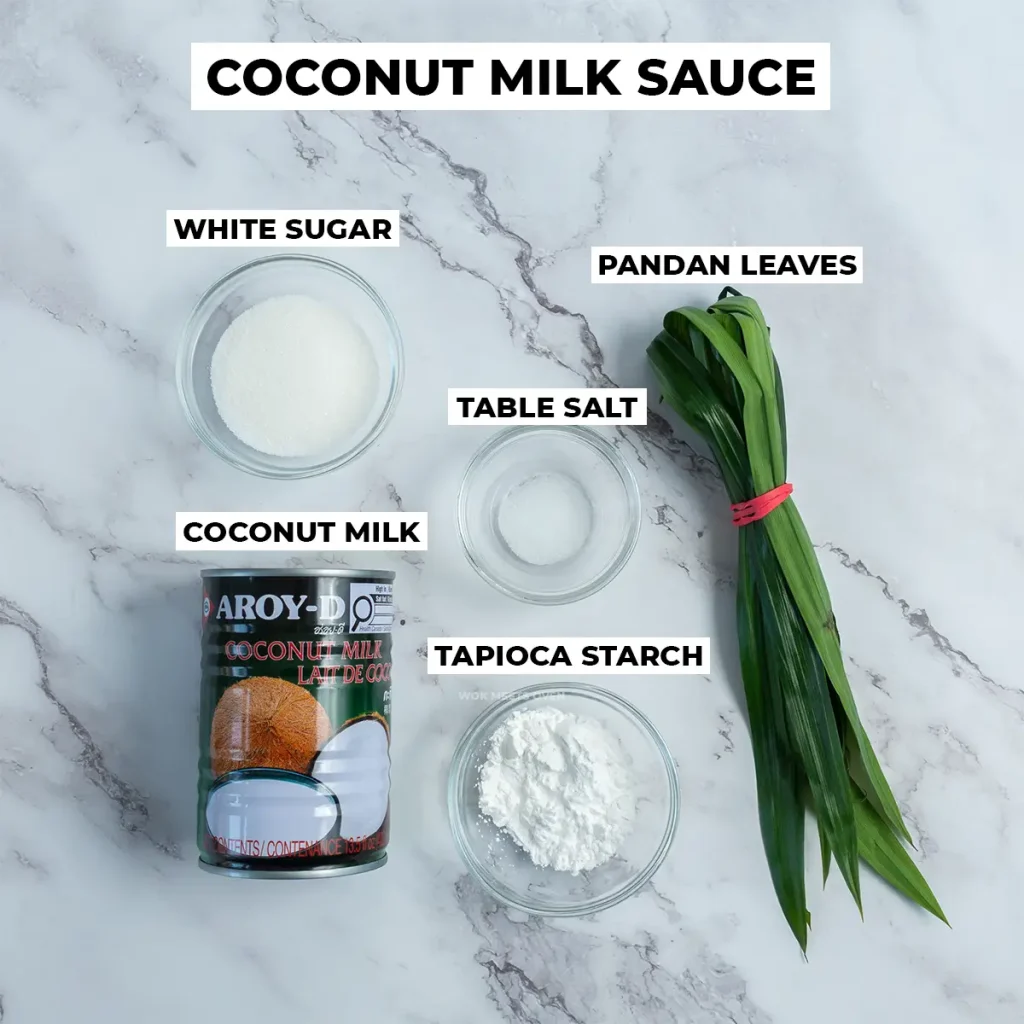
Ingredient Notes
Corn: I recommend using yellow sweet corn (bắp mỹ) for this recipe. This will ensure that you’ll have a nice yellow color for the corn pudding along with the right texture.
Pandan leaves: For the best results, use fresh Pandan leaves that are typically available at your local Asian grocery store. This will really elevate the dessert with the Pandan aroma that gets infused into the pudding.
Glutinous rice: Make sure that you are using glutinous rice (also known as sweet rice) and not regular rice that you typically eat during lunch and dinner eg. long grain or short grain rice. The texture and results will be different. Glutinous rice is typically used in a lot of Vietnamese dessert recipes or sticky rice recipes.
Substitutions
- Tapioca starch: You can opt for cornstarch if you don’t have tapioca starch at home.
- Fresh corn: You can use canned or frozen corn if you don’t have access to fresh corn, however, it won’t taste nearly as good as using fresh corn! In addition, you can substitute sweet yellow corn with white waxy corn. The texture will be slightly different though and be more on the chewier side.
- Fresh Pandan leaves: you can use either frozen Pandan leaves or Pandan juice if you don’t have access to fresh Pandan leaves. Do not use Pandan extract for this recipe as it will be too overpowering and will leave the dessert looking very green!
How to Make Vietnamese Corn Pudding
Making the Vietnamese Corn Pudding:
- Wash and soak the glutinous rice in water for 1 hour.
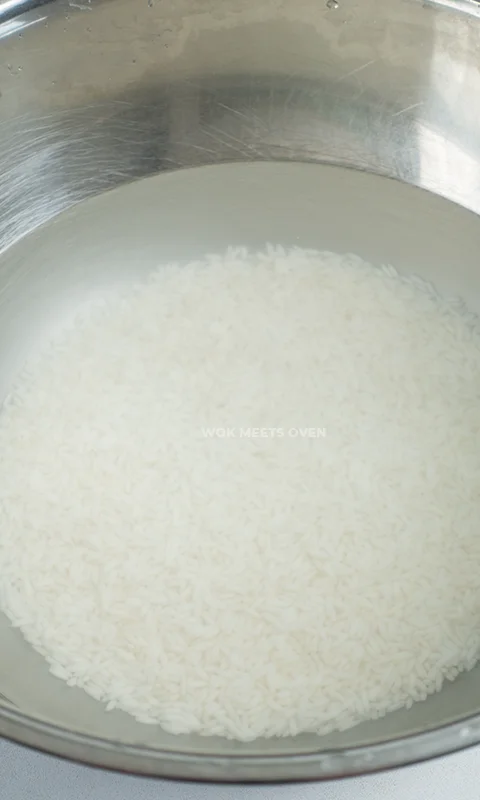
- While the glutinous rice is soaking, wash the corn and dry it off.
- Next, cut the corn kernels thinly by running either a vegetable peeler or a knife lengthwise to shave the kernels off.
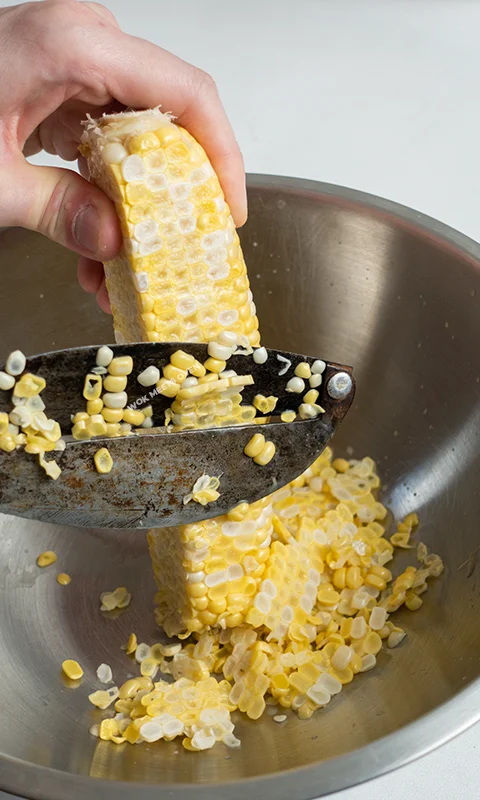
- When you’re finished shaving the corn kernels off the cobs, whisk the corn kernels between your fingers to separate them. You don’t want the corn kernels sticking together when cooking and eating the corn.
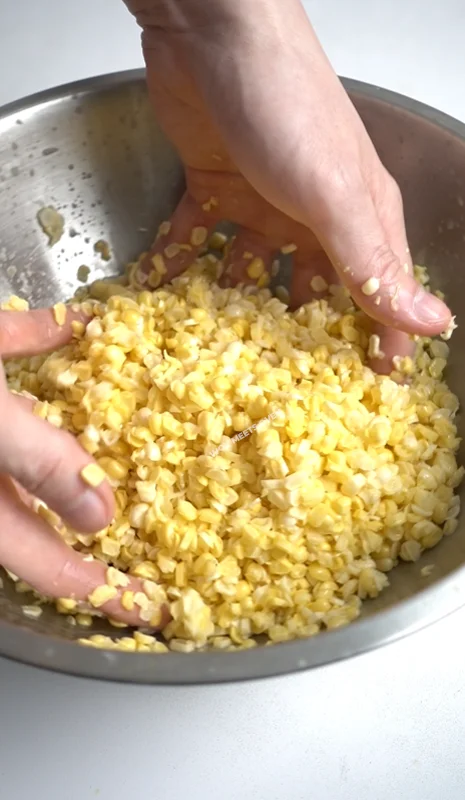
- Next, break the corn cobs in half and add them into a large pot along with the Pandan leaves. I recommend tying up the Pandan leaves before adding them to the pot. For instructions on how to tie the Pandan leaves, please read the section: How to tie Pandan leaves for cooking below.
- Add in your water and then boil the pot for 15 minutes on medium heat.
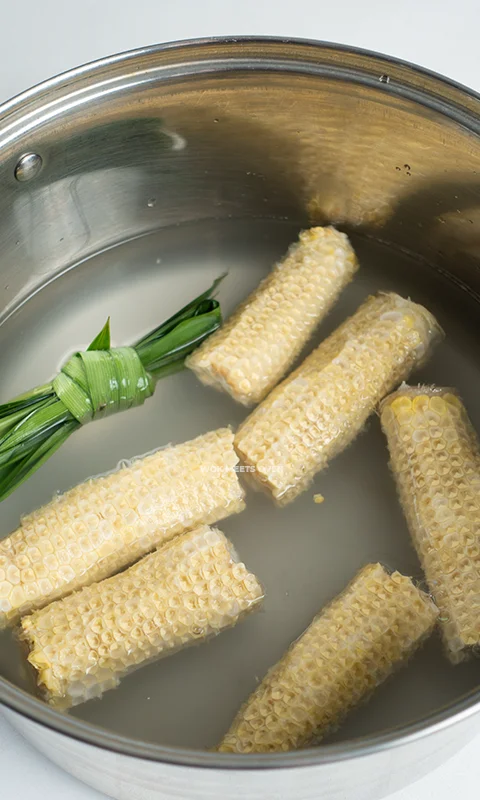
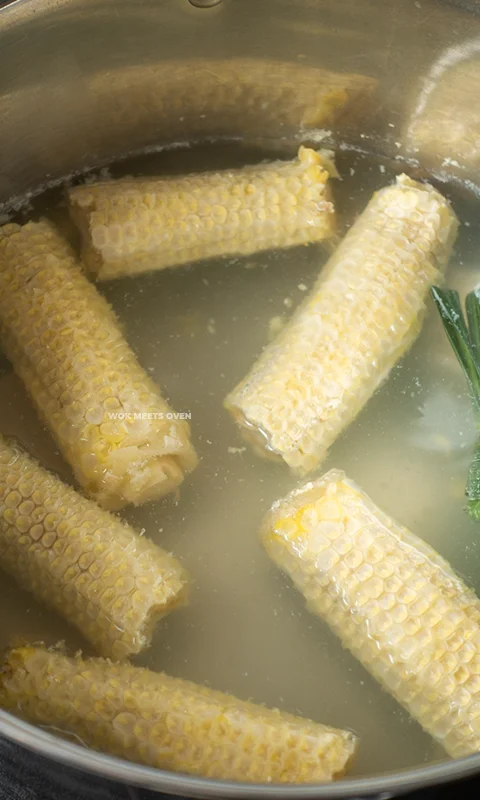
- While the pot is boiling, we’re going to cook our glutinous rice assuming you already let it soak for 1 hour before cooking. In another pot, add in your soaked glutinous rice + water. Give it a quick stir to prevent the rice from sticking to the bottom of the pot and then cook over low heat.
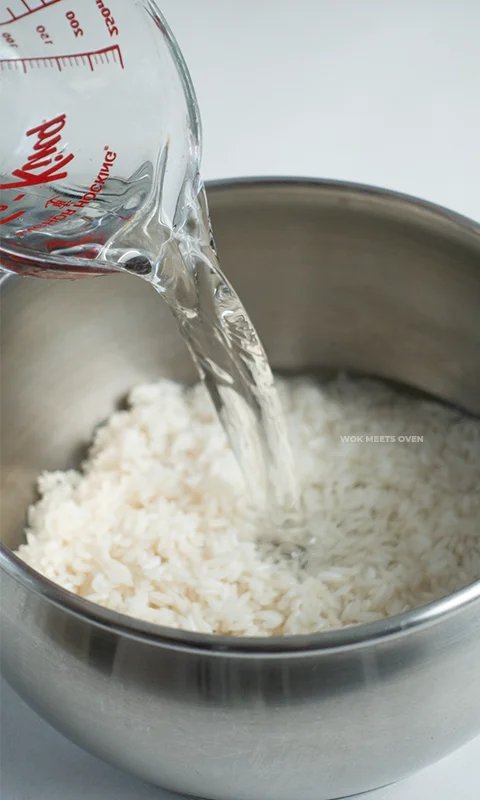
- Cook the glutinous rice until it’s cooked but don’t let it get dry. The cooked glutinous rice should resemble a texture similar to congee or porridge with the water being a little thick. It should take roughly around 10-15 minutes. Once our glutinous rice is cooked, turn off the stove and leave it there for adding later to the other pot.
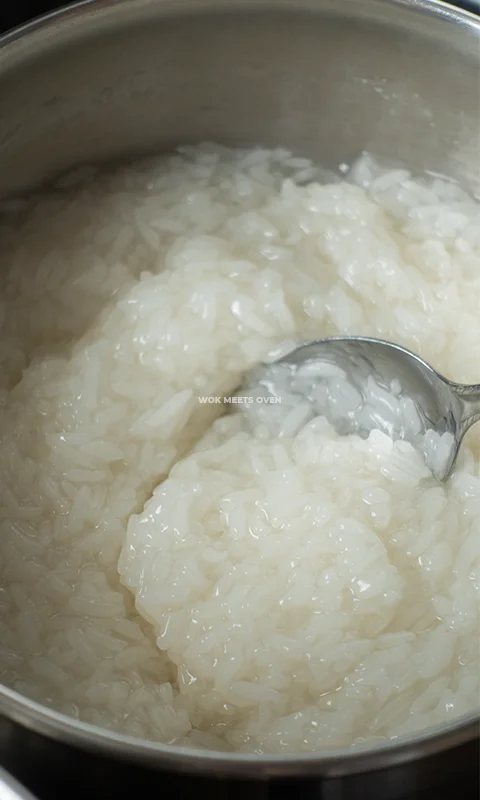
- Once 15 minutes have passed, remove all of the corn cobs and Pandan leaves from the first pot and also scrape out any foam at the top of the liquid.
- Now add your shaved corn kernels into the pot, give it a few quick stirs, and cook the kernels in the corn broth for another 6-7 minutes until it’s cooked. Also scrape out any form that forms at the top.
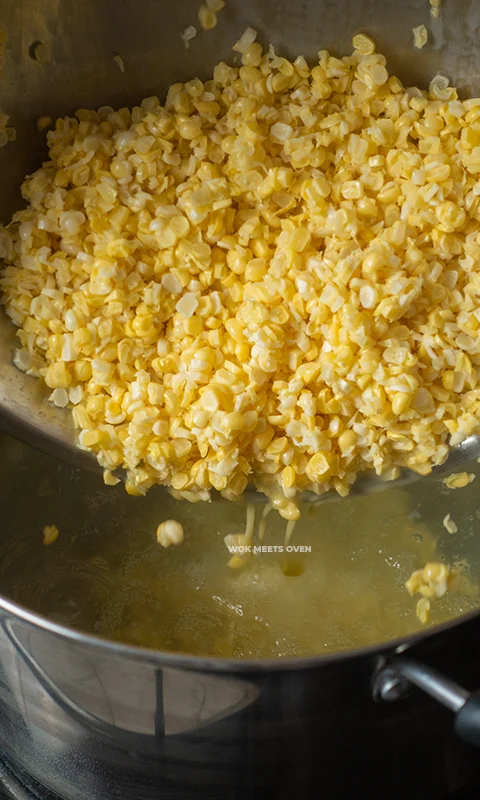
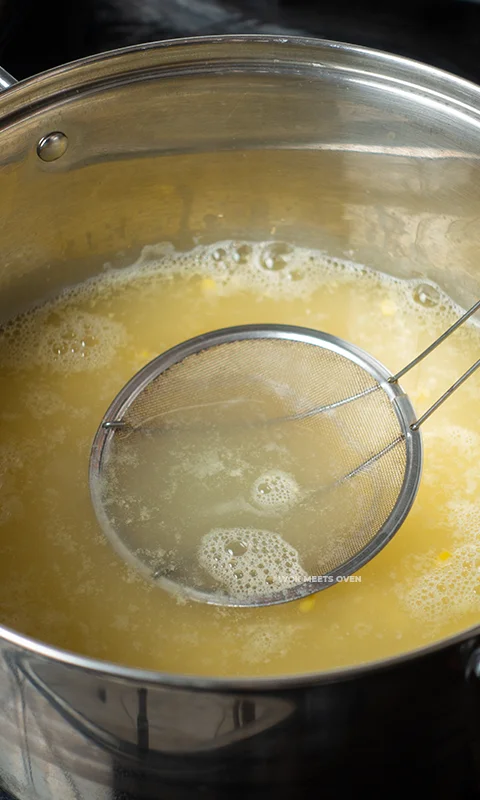
- After 6-7 minutes have passed, add your sugar and salt to the pot with the corn kernels. Mix everything well together in the pot.
- Finally, add your cooked glutinous rice to the pot with the corn kernels and mix everything well together.
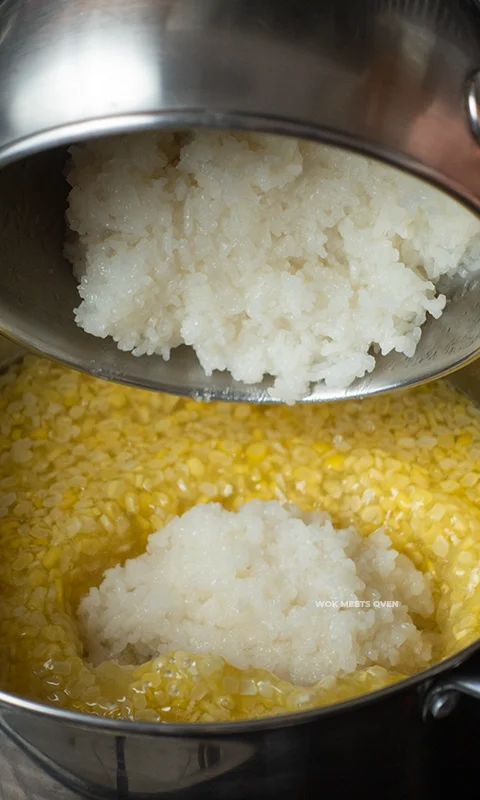
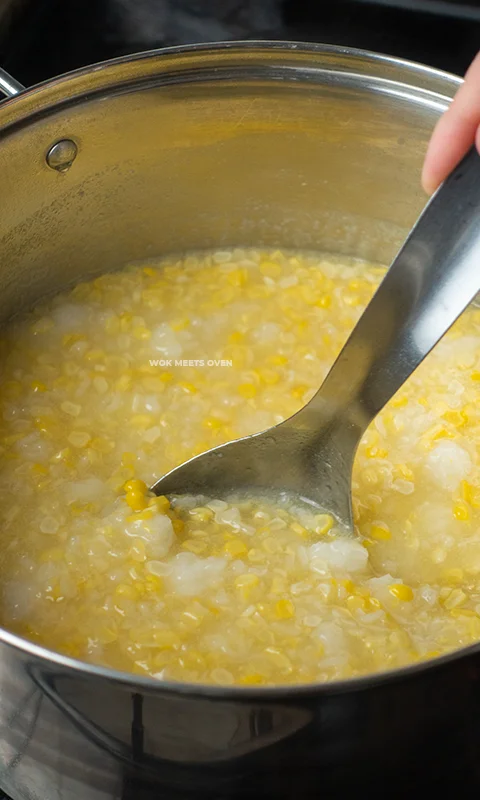
- Now prepare a tapioca starch slurry by combining the tapioca starch with water and mixing everything well together until it turns into a liquid form.
- Add this to the pot with the corn kernels as well and mix everything well together.
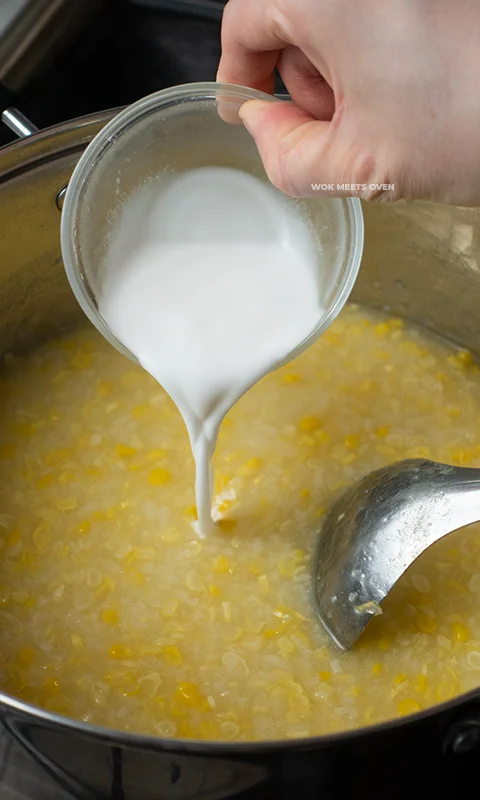
- Once the corn pudding has thickened, turn off the stove.
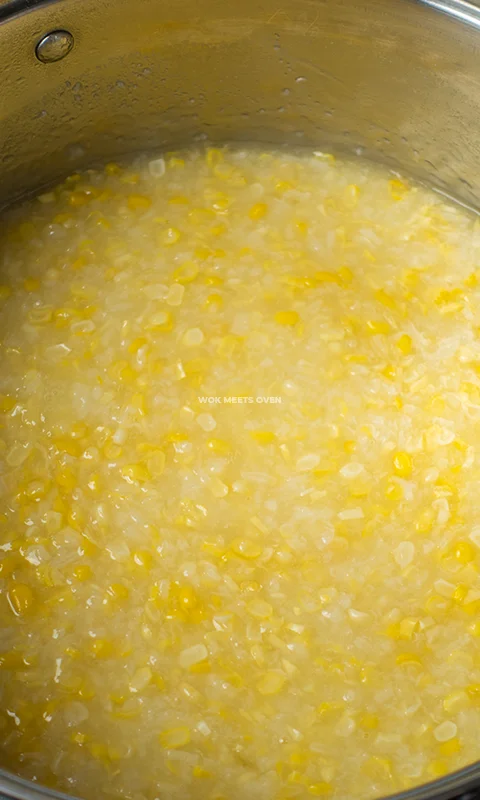
Making the Coconut Sauce:
- In another pot, add coconut milk, sugar, salt, and the Pandan leaves. Mix everything well together.
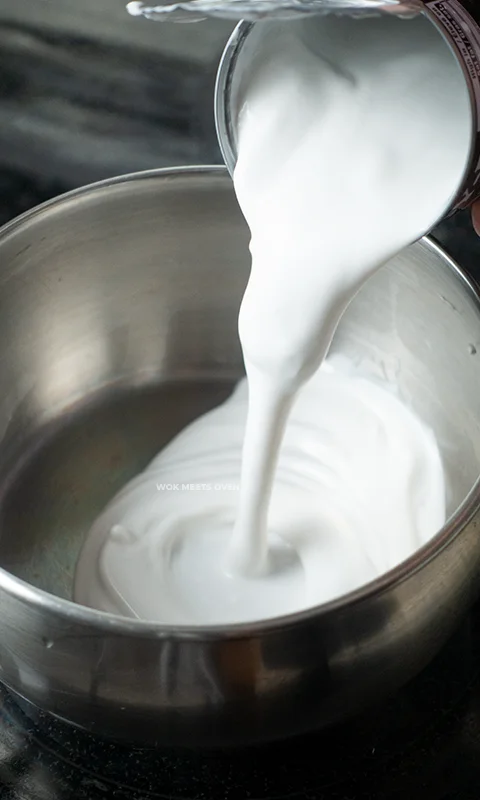
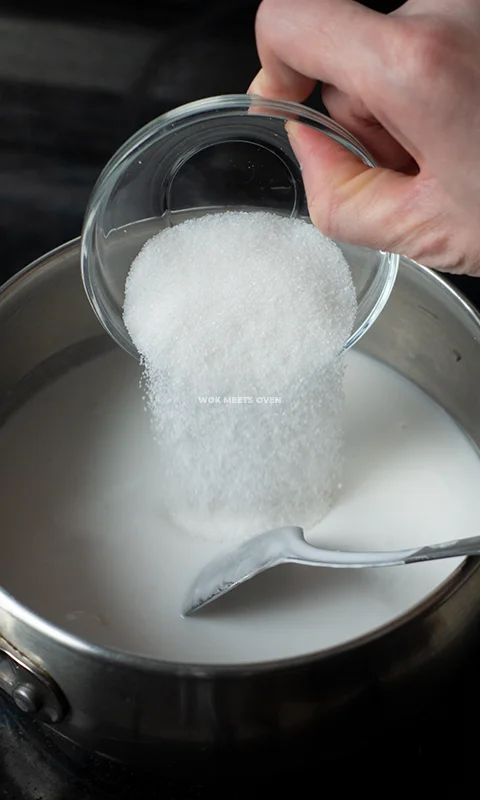
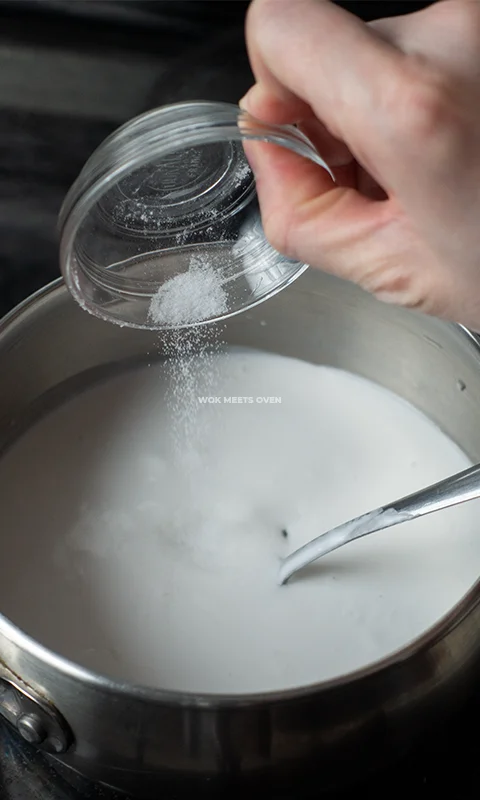
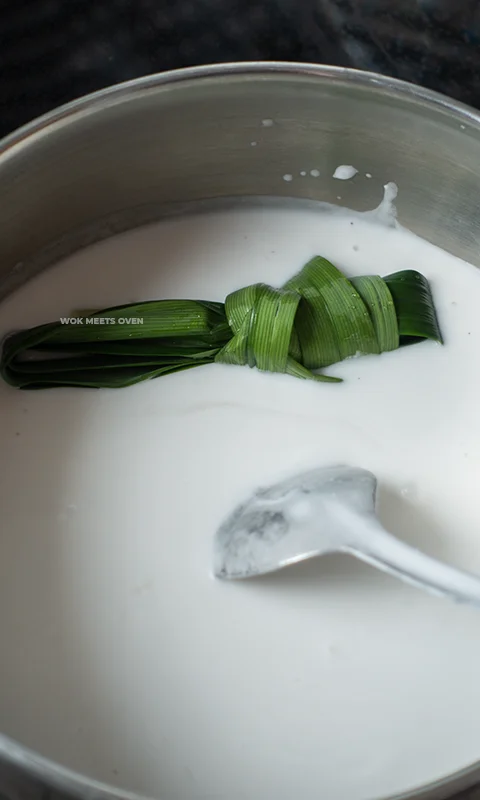
- Cook the pot over medium-low heat while occasionally stirring the pot, making sure to stir the bottom to prevent it from sticking and burning.
- Next, add in your tapioca starch slurry to the pot. Mix everything well together.
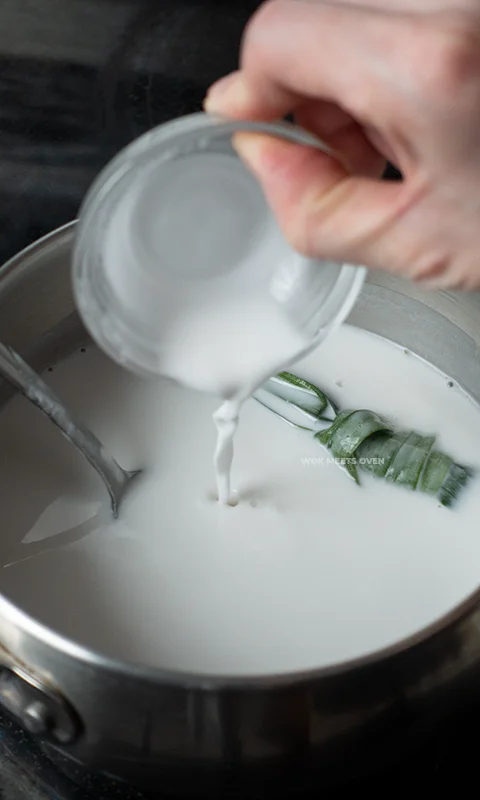
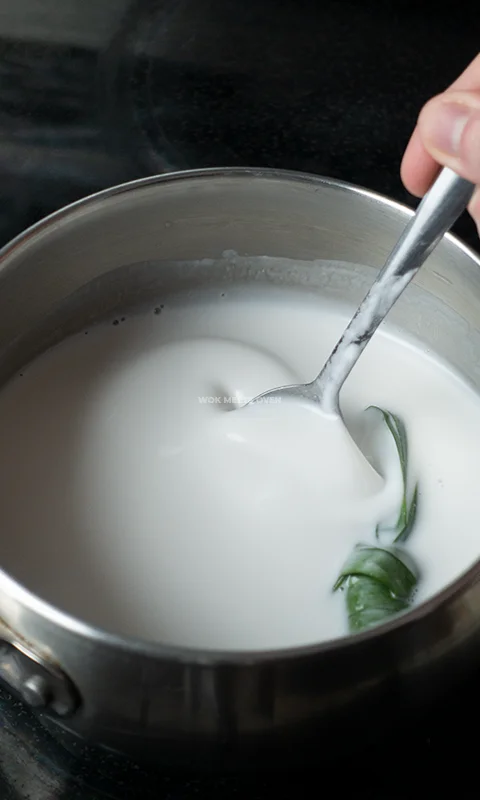
- Once the coconut sauce has thickened, turn off the stove and remove the Pandan leaves from the pot.
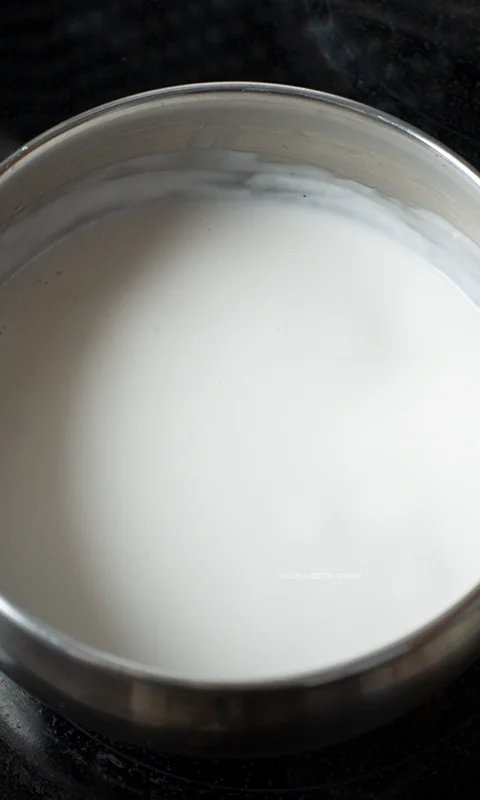
- The corn pudding dessert is now ready to be served. Scoop out some corn pudding, drizzle it with some of the coconut sauce, and then serve.
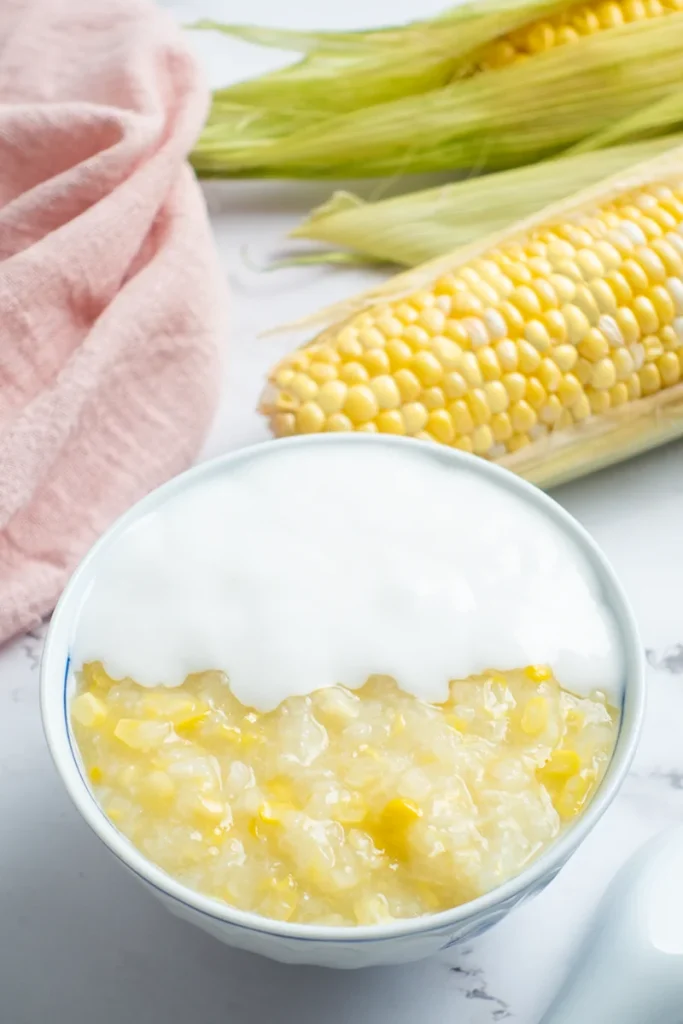
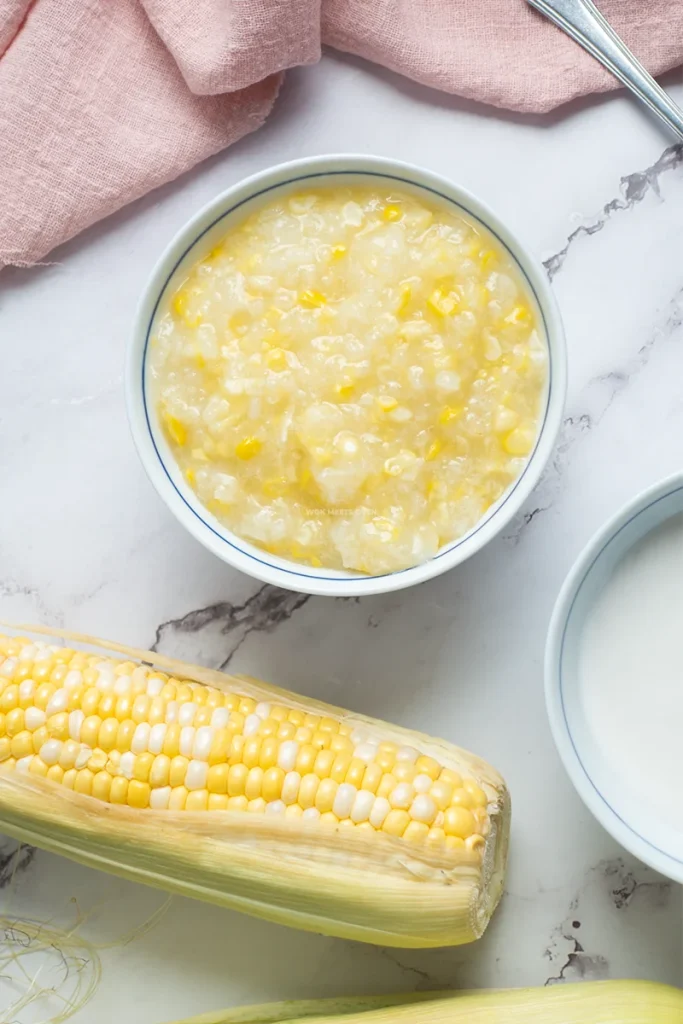
How to Tie Pandan Leaves for Cooking
- Grab 3-4 Pandan leaves that have already been thoroughly washed.
- Place them together and then fold them inwards into 3 sections.
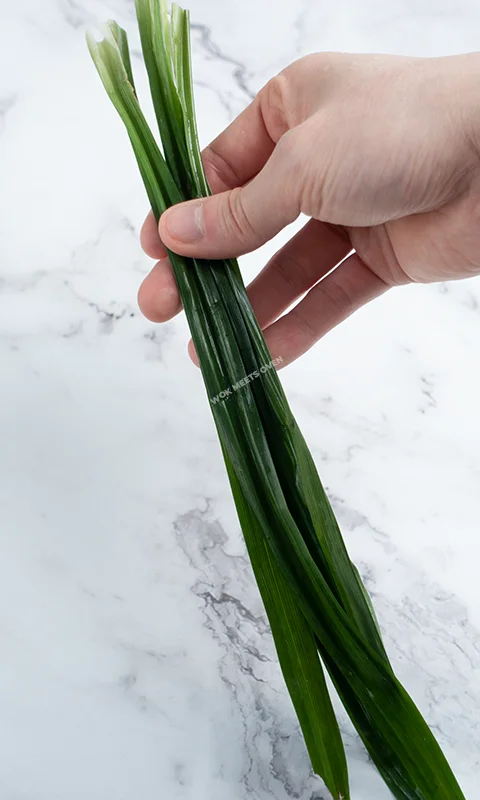
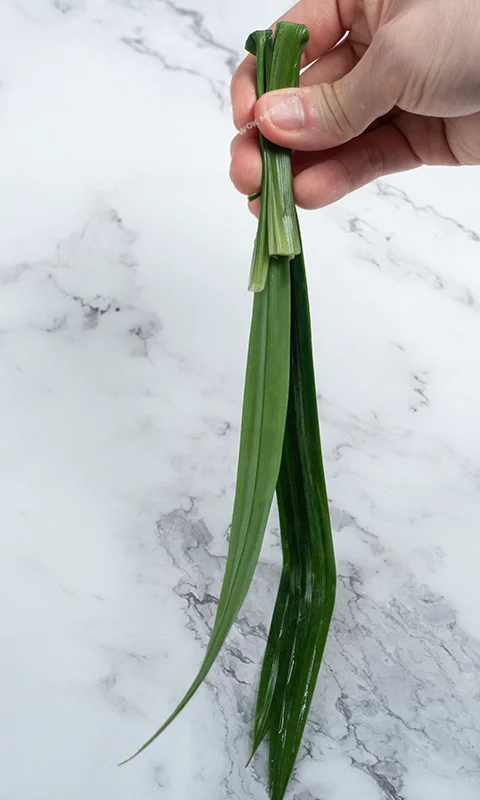
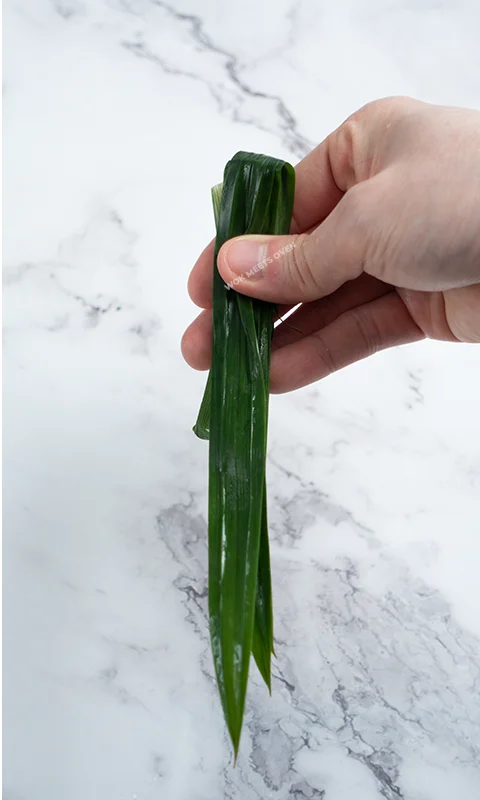
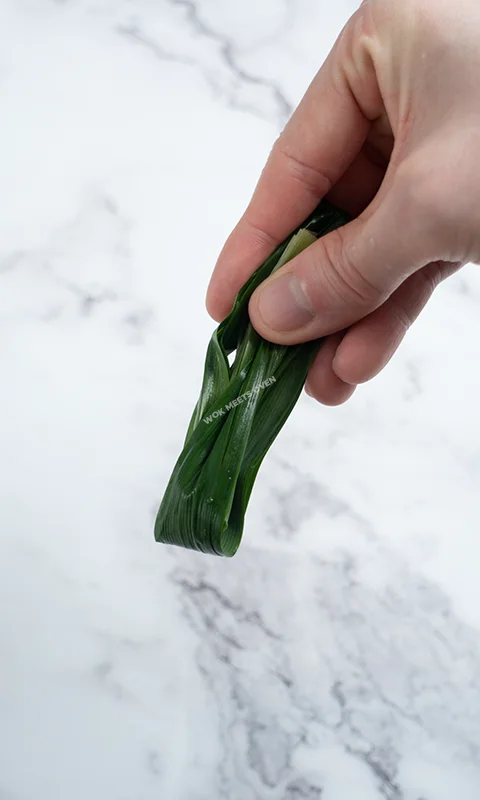
- Now take another Pandan leave and place the bunched-up Pandan leaves in the center of the leave opposite the direction of the leave.
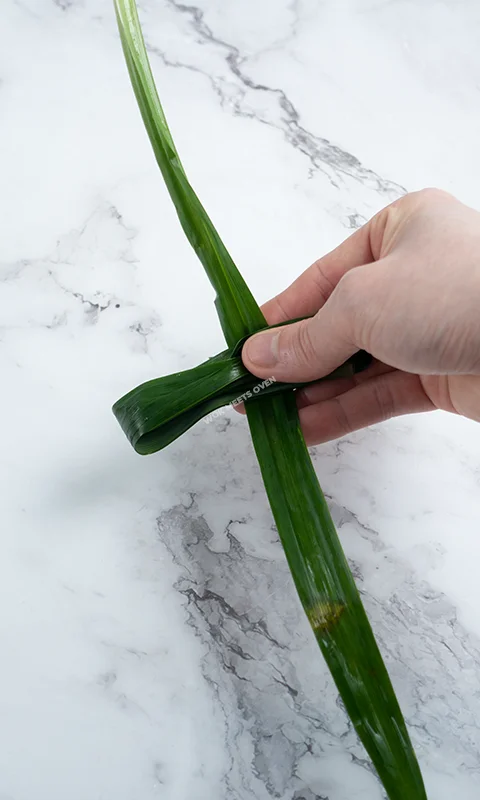
- Now take one end of the lone Pandan leave and start wrapping it around the bunched-up Pandan leaves in the center until you reach the end and then hold the leave in place.
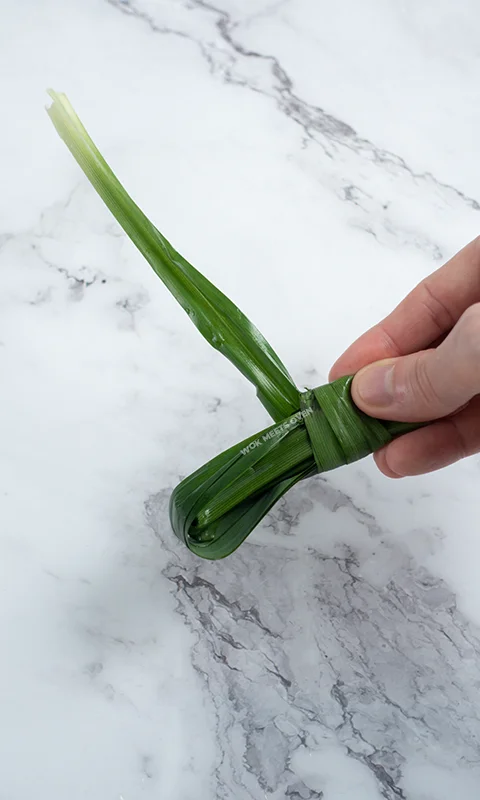
- Repeat this process with the other end of the leave, wrapping it around the bunched-up Pandan leaves in the center until you are left with a little bit of the leave sticking out, approximately 3 inches in length.
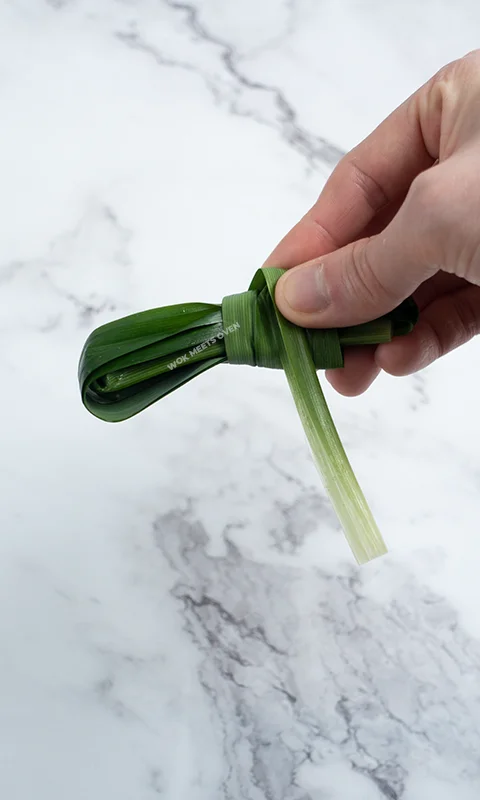
- Now take the exposed leave and then tuck it into the wrapped Pandan leaves underneath.
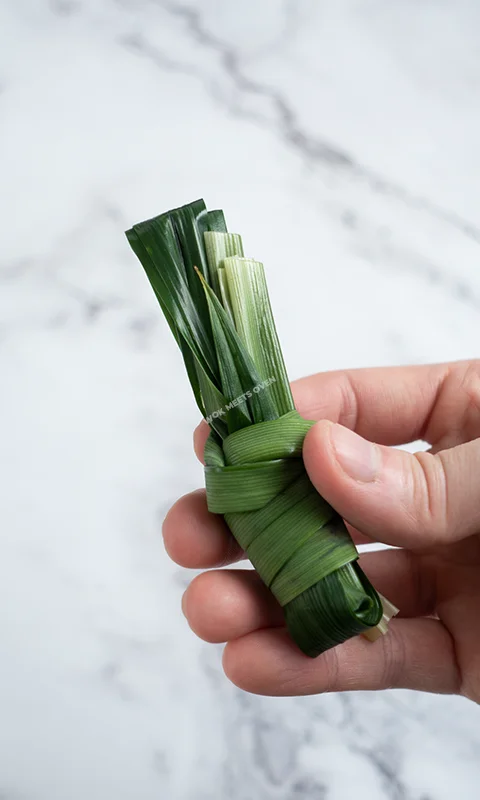
Tips
- Make sure to thoroughly wash each individual Pandan leave. There’s a lot of dirt stuck at the bottom (root) of the leaves.
- Use a vegetable peeler rather than a knife to shave the corn kernels. This will allow you to shave fine thin slivers of corn kernels.
- After shaving the corn kernels, use your hands to whisk the shaved corn kernels to separate the corn kernels.
- The Vietnamese corn pudding dessert can be served either warm, at room temperature, or chilled.
- You can adjust the level of thickness of the corn pudding and coconut sauce to your liking. If you want it to be more thicker use more tapioca slurry and less if you want it to be runnier. Also, you can add a little bit of water to it even after adding in the tapioca slurry if you find the pudding and/or coconut sauce is too thick.
Storage Tips
The corn pudding and coconut sauce can be stored in an airtight container in the fridge for up to 5 days.
Side Dishes:
If you love corn then you might want to pair this corn pudding dessert with my Vietnamese corn milk recipe as well.
Frequently Asked Questions (F.A.Q.S)
I Don’t Have Access to Fresh Corn, Can I Use Frozen Yellow Sweet Corn Instead?
Yes, and the texture might be a little different as in it won’t taste nearly as good as using fresh corn.
Can I Substitute the Tapioca Starch With Cornstarch Instead?
Yes!
Other Recipes You’ll Love
- Vietnamese Corn Milk
- Vietnamese Coconut Pandan Jelly Dessert
- Chinese Taro Sago (Tapioca) With Coconut Milk Dessert
- Milo Coconut Jelly
You can pin this image
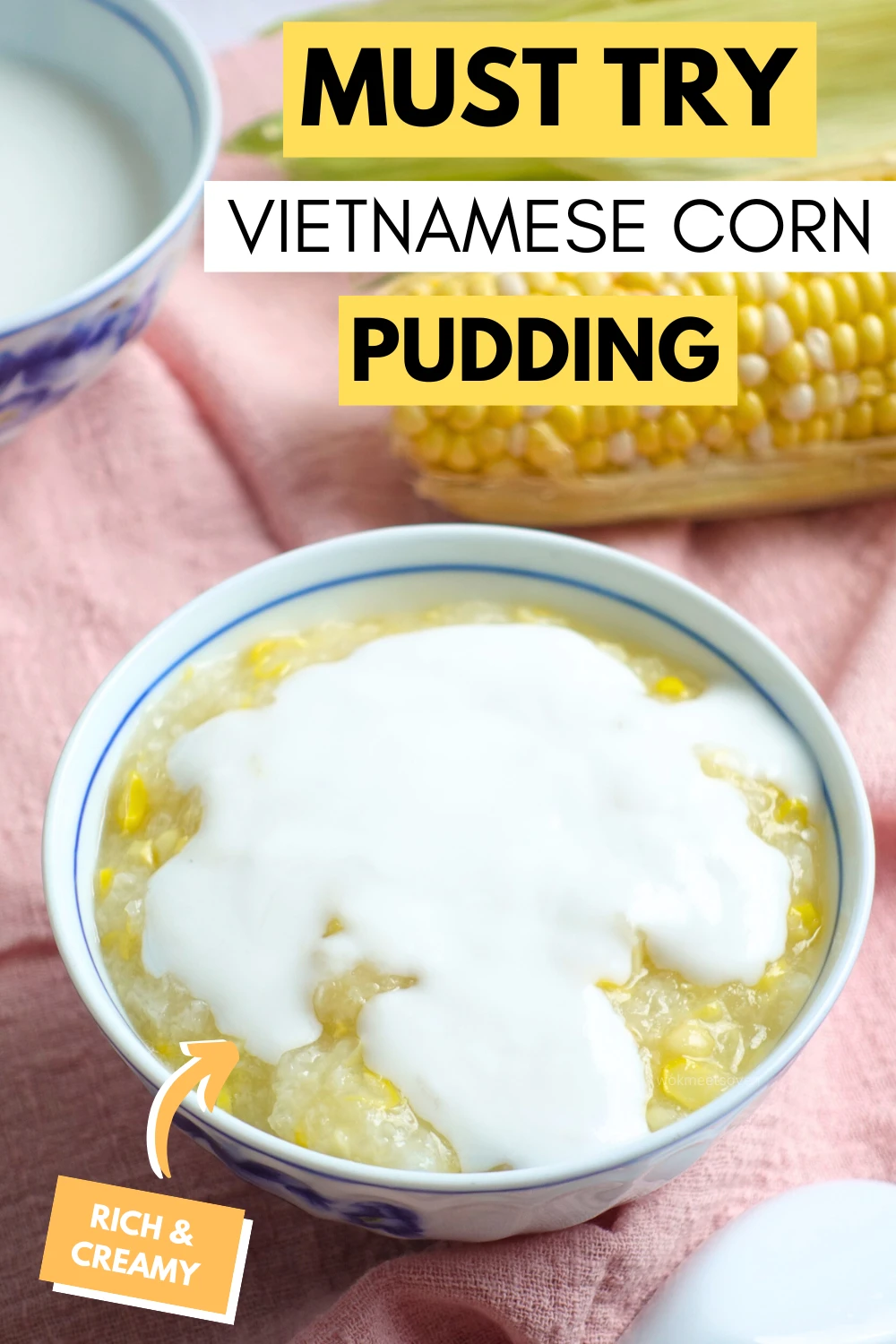
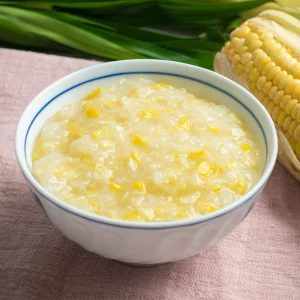
Vietnamese Corn Pudding Dessert
Equipment
- 3 Pots
Ingredients
Vietnamese Corn Pudding
- 3 Ears of fresh sweet yellow corn
- 150 g White granulated sugar
- 5 Pandan leaves
- 1/4 teaspoon Table salt
- 1.3 L Water for boiling corn cobs and Pandan leaves
- 2 Tablespoon Tapioca starch For Tapioca Slurry
- 2 Tablespoon Water For Tapioca Slurry
- 165 g Glutinous rice
- 450 ml Water for cooking glutinous rice
Coconut Sauce
- 400 ml Coconut milk
- 35 g White granulated sugar
- 1/4 teaspoon Table salt
- 3-4 Pandan leaves
- 1 Tablespoon Tapioca starch For Tapioca Slurry
- 1 Tablespoon Water For Tapioca Slurry
Instructions
Making the Vietnamese Corn Pudding:
- Wash and soak the glutinous rice in water for 1 hour.
- While the glutinous rice is soaking, wash the corn and dry it off.
- Next, cut the corn kernels thinly by running either a vegetable peeler or a knife lengthwise to shave the kernels off.
- When you’re finished shaving the corn kernels off the cobs, whisk the corn kernels between your fingers to separate them. You don’t want the corn kernels sticking together when cooking and eating the corn.
- Next, break the corn cobs in half and add them into a large pot along with the Pandan leaves. I recommend tying up the Pandan leaves before adding them to the pot.
- Add in your water and then boil the pot for 15 minutes on medium heat.
- While the pot is boiling, we’re going to cook our glutinous rice assuming you already let it soak for 1 hour before cooking. In another pot, add in your soaked glutinous rice + water. Give it a quick stir to prevent the rice from sticking to the bottom of the pot and then cook over low heat.
- Cook the glutinous rice until it’s cooked but don’t let it get dry. The cooked glutinous rice should resemble a texture similar to congee or porridge with the water being a little thick. It should take roughly around 10-15 minutes. Once our glutinous rice is cooked, turn off the stove and leave it there for adding later to the other pot.
- Once 15 minutes have passed, remove all of the corn cobs and Pandan leaves from the first pot and also scrape out any foam at the top of the liquid.
- Now add your shaved corn kernels into the pot, give it a few quick stirs, and cook the kernels in the corn broth for another 6-7 minutes until it’s cooked. Also scrape out any form that forms at the top.
- After 6-7 minutes have passed, add your sugar and salt to the pot with the corn kernels. Mix everything well together in the pot.
- Finally, add your cooked glutinous rice to the pot with the corn kernels and mix everything well together.
- Now prepare a tapioca starch slurry by combining the tapioca starch with water and mixing everything well together until it turns into a liquid form.
- Add this to the pot with the corn kernels as well and mix everything well together.
- Once the corn pudding has thickened, turn off the stove.
Making the Coconut Sauce
- In another pot, add coconut milk, sugar, salt, and the Pandan leaves. Mix everything well together.
- Cook the pot over medium-low heat while occasionally stirring the pot, making sure to stir the bottom to prevent it from sticking and burning.
- Next, add in your tapioca starch slurry to the pot. Mix everything well together.
- Once the coconut sauce has thickened, turn off the stove and remove the Pandan leaves from the pot.
- The corn pudding dessert is now ready to be served. Scoop out some corn pudding, drizzle it with some of the coconut sauce, and then serve.

